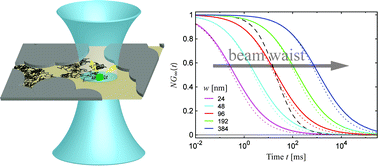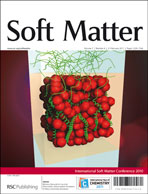A ubiquitous observation in crowded cell membranes is that molecular transport does not follow Fickian diffusion but exhibits subdiffusion. The microscopic origin of such a behaviour is not understood and highly debated. Here we discuss the spatio-temporal dynamics for two models of subdiffusion: fractional Brownian motion and hindered motion due to immobile obstacles. We show that the different microscopic mechanisms can be distinguished using fluorescence correlation spectroscopy (FCS) by systematic variation of the confocal detection area. We provide a theoretical framework for space-resolved FCS by generalising FCS theory beyond the common assumption of spatially Gaussian transport. We derive a master formula for the FCS autocorrelation function, from which it is evident that the beam waist of an FCS experiment is a similarly important parameter as the wavenumber of scattering experiments. These results lead to scaling properties of the FCS correlation for both models, which are tested by in silico experiments. Further, our scaling prediction is compatible with the FCS half-value times reported by Wawrezinieck et al. [Biophys. J., 2005, 89, 4029] for in vivo experiments on a transmembrane protein.

You have access to this article
 Please wait while we load your content...
Something went wrong. Try again?
Please wait while we load your content...
Something went wrong. Try again?


 Please wait while we load your content...
Please wait while we load your content...